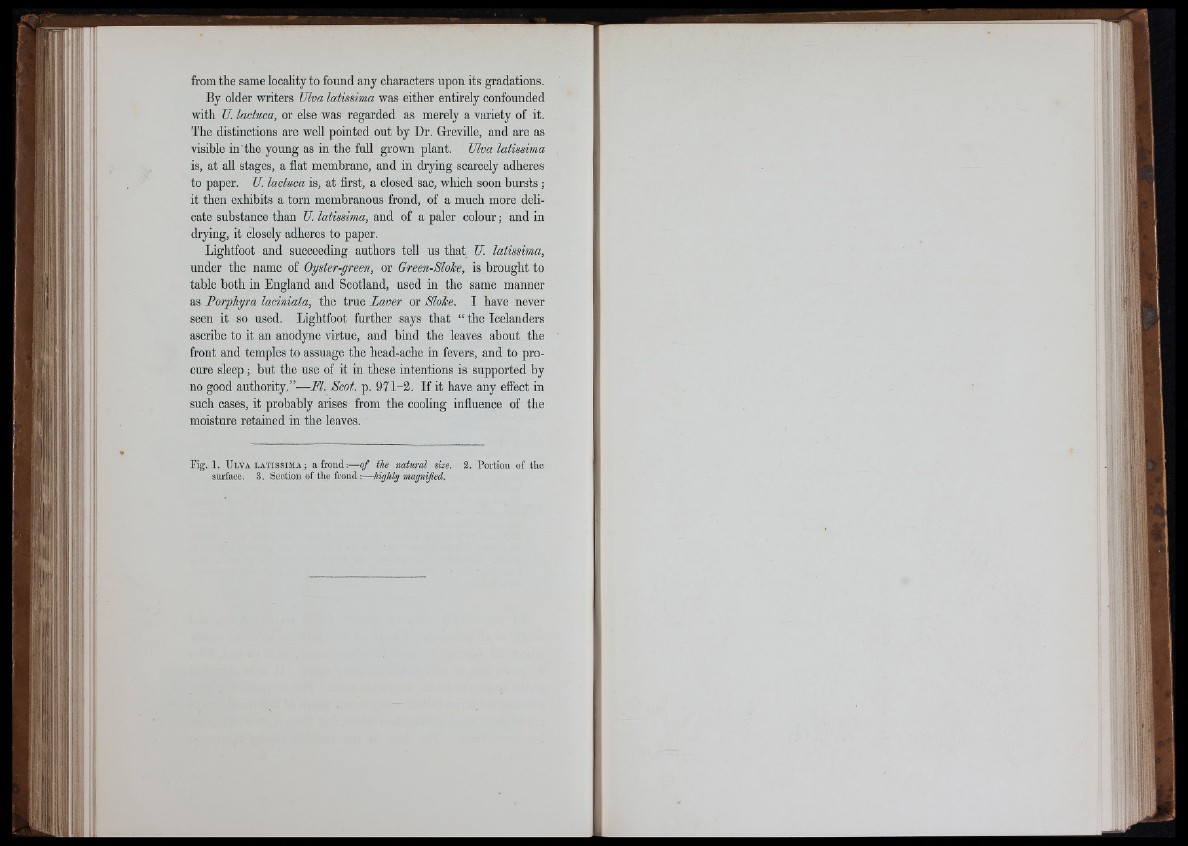
from the same locality to found any characters upon its gradations.
By older writers Ulva latissima was either entirely confounded
with U. lactuca, or else was regarded as merely a variety of it.
The distinctions are well pointed out by Dr. Greville, and are as
visible in the young as in the full grown plant. Ulva latissima
is, at all stages, a flat membrane, and in drying scarcely adheres
to paper. U. lactuca is, at first, a closed sac, which soon bursts;
it then exhibits a torn membranous frond, of a much more delicate
substance than U. latissima, and of a paler colour; and in
drying, it closely adheres to paper.
Lightfoot and succeeding authors tell us that U. latissima,
under the name of Oystcr-grecn, or Grccn-Sloke, is brought to
table both in England and Scotland, used in the same manner
as Porphyra laciniata, the true Laver or Sloke. I have never
seen it so used. Lightfoot further says that “ the Icelanders
ascribe to it an anodyne virtue, and bind the leaves about the
front and temples to assuage the head-ache in fevers, and to procure
sleep; bnt the use of it in these intentions is supported by
no good authority.”-—FI. Scot. p. 971-2. If it have any effect in
such cases, it probably arises from the cooling influence of the
moisture retained in the leaves.
Fig, 1. U lva LATISSIMA; a frond:— of the
surface. 3. Section of the frond :—j
size. 3. Portion of the
iu:
i f
S